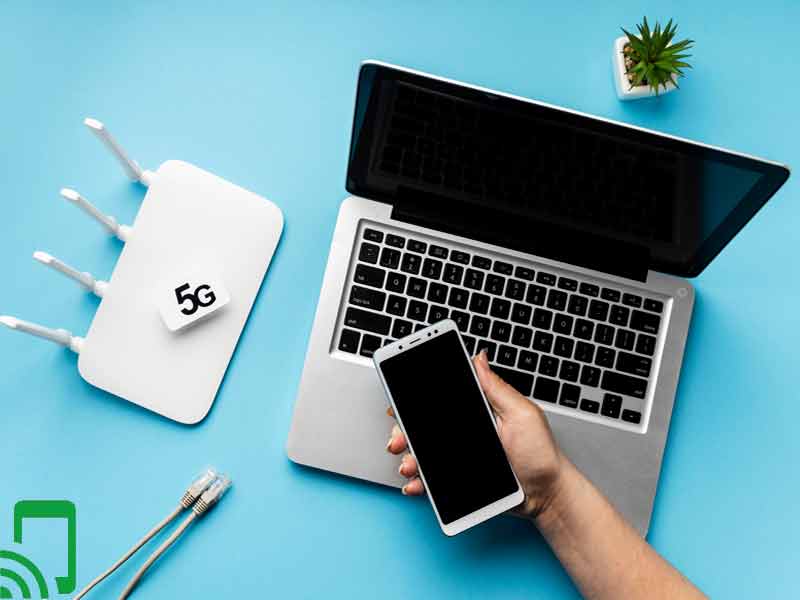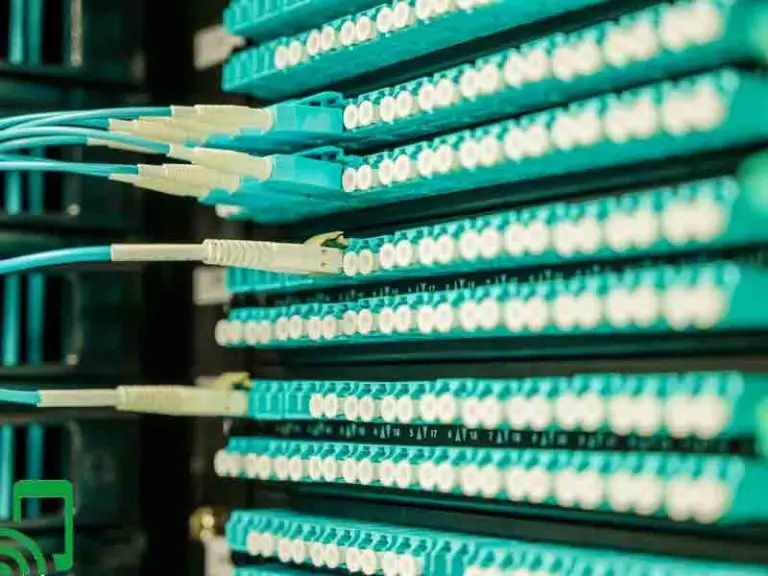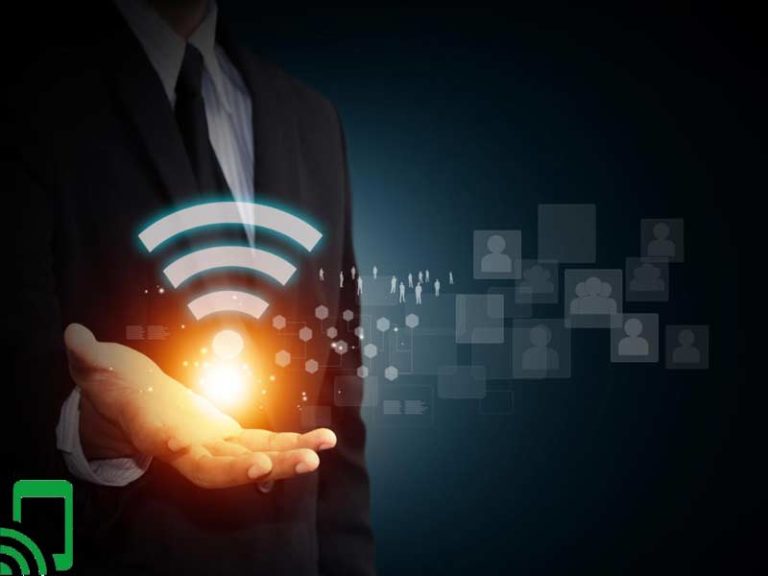How To Get Wi-Fi Without Internet Provider
Wi-Fi is one of the crucial technologies that facilitate networking and communication in this digital world. It helps you to connect to the internet without the wires. Wi-Fi gets utilized for different purposes, including data transmission and wireless communication. However, connecting through a Wi-Fi signal in every possible way will most often lead to faster, more convenient internet access, and it’s quite affordable.
However, monthly data plans from internet service providers can be expensive, and there is a way you can navigate that bill. There are numerous occasions you might be unable to have internet connectivity when you need it due to unaffordable circumstances. There are various ways on how to get Wi-Fi without an internet provider, as discussed later in this article in such scenarios.
Most importantly, Internet Service Provider (ISP) offers wireless services to customers by providing talk, text, and data plans. The company can charge you something between $40-60 per month to allow you to use their connection to the internet. For the average person, that amount is quite a lot of money, and not everyone can pay such a massive price every month.
What Should You Have To Consider To Get Wi-Fi without Internet Providers

i) Internet
The internet refers to an e-communications network that joins computer networks and organizational computer utilities around the globe. Initially, it was known as ARPANet, and unlike modern-day internet, which enables communication on a larger scale, ARPANet primarily facilitated a communication link among computers at Pentagon-funded research institutions.
However, there is a difference between the internet and ARPANet. But, there are specific environments where the two are almost similar. Both ARPANet and the internet establish communication among computers via Internet protocol (IP) and Transfer/Transmission Control Protocol (TCP).
The Internet protocol obtains the address through which data get delivered, while the Transfer control protocol ensures data delivery immediately after the IP address is detected. In other words, these protocols function together to transmit data in the form of encrypted packages via the World Wide Web.
ii) World Wide Web
World Wide Web (WWW), also known as the web, is what most ordinary people draft on their minds when they think of the internet. The web is simply an information system where Uniform Resource Locators identify web resources and other documents (URL), interlinked by hypertext, and accessible via the internet. The World Wide Web is the leading portal whereby information gets retrieved through the internet.
Hyperlinking entails the creation of electronic communication between web pages using specific links. Again, these links search the information present on various pages. This is why you select a phrase or word that got hyperlinked, and you get access to extra information related to that phrase and word.
In other words, web resources get transferred by Hypertext Transfer Protocol (HTTP), and users can access it via a software application referred to as the web browser. Besides, another software application known as the webserver works in publishing these resources.
iii) Internet Provider
Internet providers involve companies containing a network of regular internet cables or fiber optic cables established in place. Thus, these providers can supply you with Wi-Fi at Home without Cable by allowing you to connect to their network and utilize it to get online.
Additionally, internet providers are also known as Internet Service Providers or ISPs. ISP provides a gateway to the internet by availing a link that connects your computer to servers via the internet.
Moreover, to better understand how ISPs link you up, take a scenario whereby you send an email to someone. You need to first key in the content, type in the email address, and send it. The channel for the delivery process goes from your computer to your internet service provider’s server. Next, the server transfers the data via an electronic path to its intended destination immediately.
iv) Wireless Providers
Wireless internet providers provide services to people using wireless networking. The process is not different from how wired broadband connects consumers to the internet. Instead of using copper lines or coaxial and fiber optic cables, the wireless providers utilize patented equipment or the wireless mesh networking tech to transmit data through licensed radio frequencies to the user end.
Several technologies comprise wireless networks, but they are all radio systems. Whether mobile wireless (2G, 3G, 4G, LTE, or 5G), fixed wireless, satellite, or Wi-Fi. Besides, for both wired and wireless connectivities, the base station gets connected to a high capacity data transmission network to get to the internet protocol. In contrast, transmission or cell towers get employed to connect to the user end via radio signals.
v) Wi-Fi
Wi-Fi is means IEEE 802.11 and is a technology that utilizes radio waves to offer wireless high-speed internet and network connection depending on IEEE 802.11 standards. When you join any Wi-Fi signal, it is either connecting through a Wireless provider or ISP to connect you with the internet.
Wi-Fi technology combines radio waves and frequencies for passing data over a short distance. When used together with wired or non-wired internet connections, you can get multiple devices wirelessly connected. Nowadays, every mobile device and computer come enabled to sense a wireless network, but a wireless adapter can get used separately.
vi) Hotspot
The hotspot is a device creating a WIFI signal by the use of a wireless provider’s network. Hot spots can get enabled by most latest smartphones or standalone ‘hot spot’ devices. In other words, any region where a wireless network is available automatically qualifies as a hotspot.
Using a hotspot, you can connect to the internet using your mobile devices such as cell phones and laptops through a wireless local area network (WLAN). A wireless router or gateway form the body of a Wi-Fi network and directs devices on WLAN to the internet service provider’s network.
vii) Tethering
Tethering comes along when you connect a cell phone with a computer using a USB cable to access the internet. If you want to share your mobile data connection with other devices such as laptops or tablets, you can achieve it via tethering.
This process requires a cell phone like a modem and enables you to share a mobile broadband connection with other devices over Bluetooth, WLAN, or a physical connection using a USB cable. In other words, your mobile device stands as a wireless gateway that supports Wi-Fi enabled devices close to building up an internet connection.
The Most Useful Ways to Get Wi-Fi without Internet Providers
1) Mobile Hotspot
Most recent smartphones and cellular tablets nowadays can act as a mobile Wi-Fi hotspot. This tool shares your mobile data plan with any connected devices using the same Wi-Fi hotspot. Notably, it would help if you kept in mind that you are using data from your cell phone plan to supply all the connected devices.
Hence, you need to have cheap data, or the best unlimited mobile hotspot plans to be on the safe side. So, if you have a small data cap or incur a lot for your data, this method may not be suitable for you. To get the most out of this type of connection, you must set a data limit on the device acting as the hotspot.
Also, you have to set a password for your mobile device to control unauthorized access. You don’t need another user hijacking your data. However, using your mobile device as a Wi-Fi hotspot is a significant threat to battery life, so a power bank is a must-have to counteract this.
Most importantly, some devices like computers consume a lot of data when streaming; hence it’s good to manage your data to avoid paying more on your monthly data plans. Ensure you have the most optimal and the best data package to achieve the most out of the mobile hotspot option.
2) Cable Tethering To A Mobile Device
Another alternative to using a Wi-Fi hotspot is the use of a cable. If you only want to connect one device to the internet, cable tethering would be convenient. Instead of establishing a Wi-Fi hotspot, think of using a USB cable to tether your tablet or phone directly to your computer.
Interestingly, this method has a few advantages over the Wi-Fi hotspot as no one can hack into your network. Still better, the computer charges the device, and you may even experience faster speeds when using the USB connection than Wi-Fi.
Additionally, you are still utilizing your mobile data and connectivity to access the internet; hence data policies and conditions apply. The tethering method uses slightly reduced battery power than the hotspot. Thus it might be ideal to use if your phone’s battery health is poor.
However, it would help if you understood that tethering had increased the data transfer limits than a hotspot connection. So, tethering is perfect for more straightforward tasks such as emails and browsing. Besides, video streaming and other data-hungry tasks will not work seamlessly with the tether option.
- If you possess an Android device, you can tether by going to Settings > Network, and internet >Hotspot and Tethering, then navigate to Wi-Fi Hotspot into the On slide.
- For iOS users, you need to go to Settings > Personal Hotspot and slide the toggle.
- For Android and iOS, setting a new username and password is necessary to protect your hotspot’s security.
3) Find Public Wi-Fi
Public Wi-Fi hotspots offer a great option to get Wi-Fi without an internet provider. You can also get access to Wi-Fi at Home without a Router as an inexpensive option. These hotspots are available in businesses such as restaurants or coffee shops, and people can even receive the signal from inside their homes. However, there exist some Wi-Fi hotspots sponsored by the government in some states.
Moreover, many cities all over the world provide free Wi-Fi access. In some locations, the Wi-Fi signals cover a great area, while it e is restricted to a small radius in others. There are places where these Wi-Fi connections aren’t open to everyone, requiring you to have an access password to connect.
However, many times you can get to know this Wi-Fi password just by engaging in their services or taking a drink in restaurants and bars. You can get nearby free Wi-Fi through apps like Wi-Fi Finder on iOS or Wi-Fi Master Key on Android.
Most importantly, you need to follow the below recommendations for your security when using public Wi-Fi hotspots.
- Do not enter any personal information.
- Forget the network after you finish using the internet.
- Enable two-factor authentication to block the black hat hackers to reach out to you
- Use a VPN to identify yourself as anonymous.
4) Wi-Fi USB Dongle
Wi-Fi USBs also referred to as the Instant Internet, are portable USB devices, slightly larger than a typical USB key, that works with a SIM card to access the internet via Wireless Provider. However, these gadgets operate similarly as a tethering option, but they can handle video streaming and other large-data actions.
Thus, the data available to you depends on your deal with a wireless provider, while the connectivity speed depends on the signal’s quality. Nevertheless, 4G or LTE network versions are what you need for smooth browsing, 3G may function for emails, but there will be a challenge in loading images and larger files. Any network below 3G is not fit for online work.
5) Share Someone’s Internet
It is possible to share your internet with your neighbor if they avail the Wi-Fi password to you. Alternatively, you can scan available networks and see if there is one unlocked that doesn’t require you to put a password. You can share an internet connection from a Windows computer by going to;
Settings > Network and internet> Mobile Hotspot. You can choose the connection you need to share and slide the icon into the On mode.
If you require to share an internet connection from a macOS device, go to Apple > System Preferences > Internet Sharing. You can select the connection you need to share in the Share your link using the drop-down menu, then choose how you intend to share the internet from the list of options provided.
6) Use Free (Trial) Services
Some ISPs offer free trial services, and this depends on the provider’s current offers. You can use Google and search for ‘Free Internet Service Provider trial’ or something similar. These kinds of free trials are useful with the dial-up internet providers and involve free internet use hours.
However, you can receive free access for a whole month, but be watchful. Sometimes you might need to sign a deal to receive a free trial.
7) Important of the Internet
The internet has enhanced many aspects of life, including businesses, learning institutions, and the telecommunication world. The importance of internet is ideal as an information tool and circulation of knowledge to society in this modern world.
With the internet’s help, a business can transact conveniently, students can access lectures on the go, and everyone gets connected to the current affairs and emerging issues. For the entertainment sector, streaming its media has been successful thanks to the internet. Security beefed up thanks to controlling smart homes, and every aspect of human life that is internet depended gets significantly changed.
Bottom line
The perfect way to have Wi-Fi without an internet provider depends on how you want to utilize the internet and where you live. If you conduct a lot of work on-the-go, consider a fully-fledged mobile hotspot.
However, casual users might need to use simple options like tethering or buy a portable WIFI USB. The provided options will enable you to get online without owing a monthly fee to the ISP.






